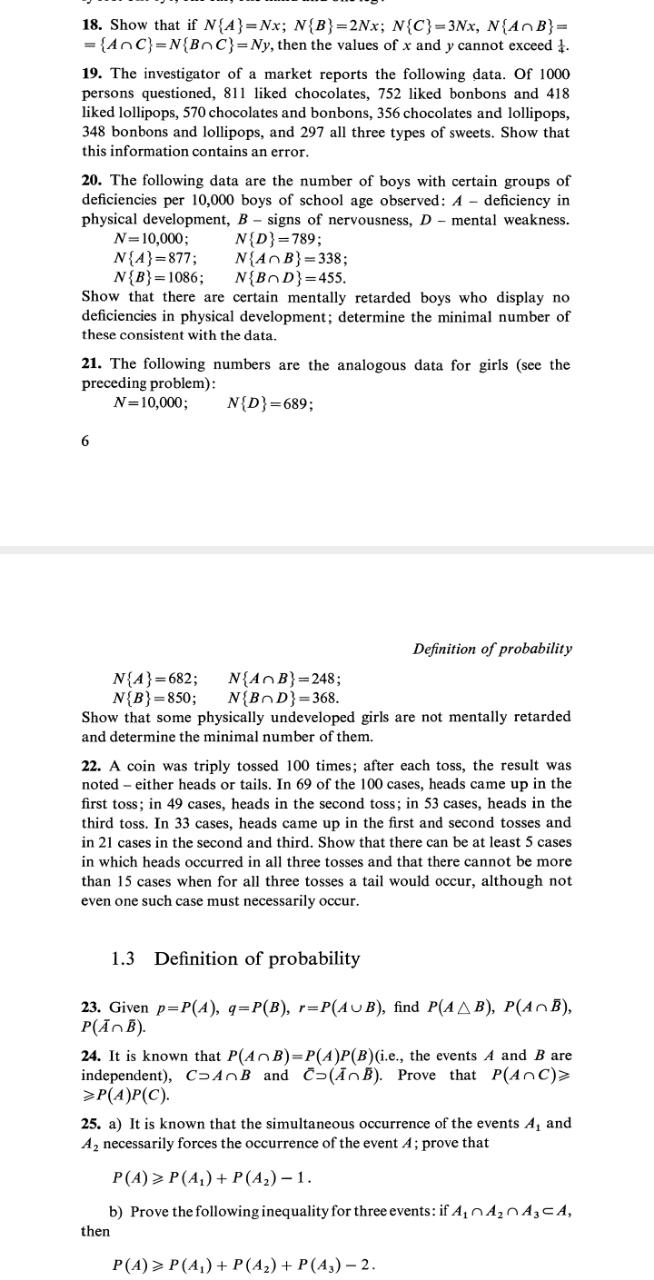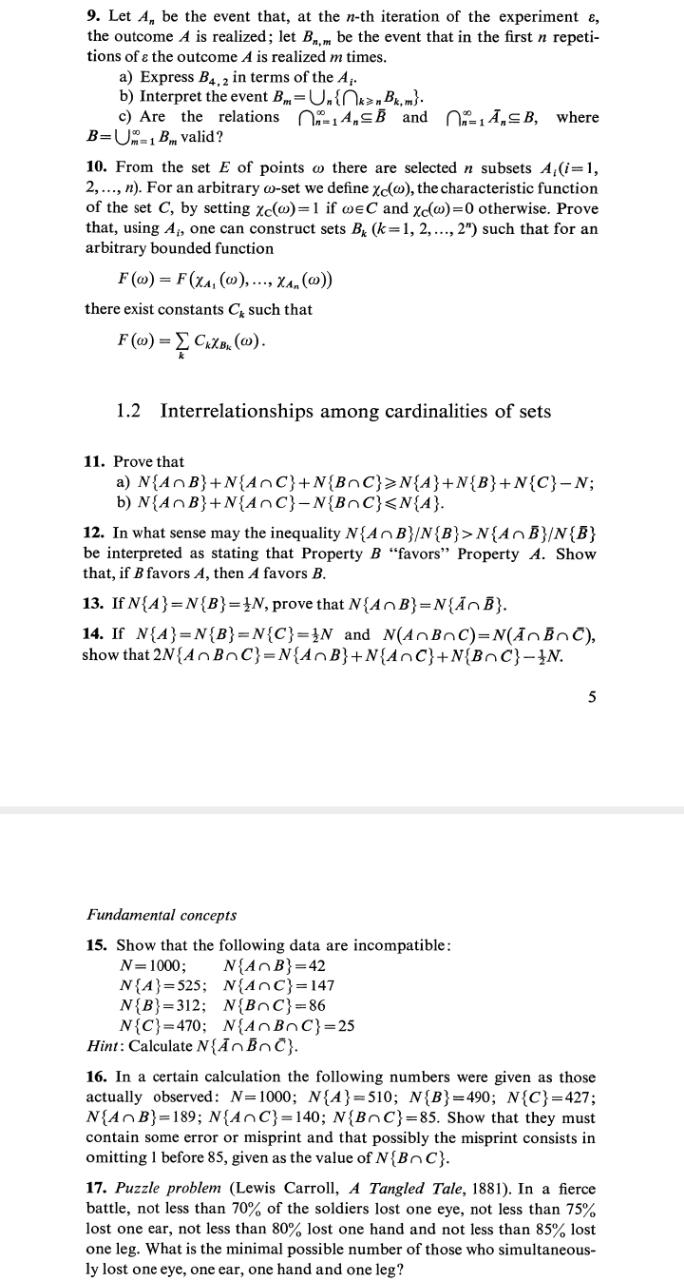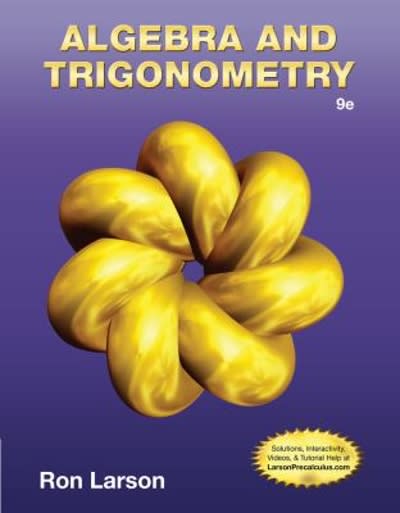

Solve the following probability questions.
1. From among the students gathered for a lecture on probability theory one is chosen at random. Let the event A consist in that the chosen student is a young man, the event B in that he does not smoke, and the event C 3 Fundamental concepts in that he lives in the dormitory. a) Describe the event An Bn C. b) Under what conditions will the identity An BAC=A hold? c) When will the relation C CB be valid? d) When does the equation A=B hold? Will it necessarily hold if all the young men smoke? 2. A target consists of five discs bounded by concentric circles with radii Tx (k= 1, 2, ..., 10), where r > P(A ) P(C). 25. a) It is known that the simultaneous occurrence of the events A, and A2 necessarily forces the occurrence of the event A; prove that P(A) > P(A, ) + P(A2) - 1. b) Prove the following inequality for three events: if A, nA, n A; CA, then P(A) > P(A,) + P(A2) + P(A,) - 2.9. Let A, be the event that, at the n-th iteration of the experiment &, the outcome A is realized; let B.,, be the event that in the first n repeti- tions of & the outcome A is realized m times. a) Express B4, 2 in terms of the A;. b) Interpret the event Bm = U.{nkan BK.m). c) Are the relations , ASB and , A,CB, where B= Um=1 Bm valid? 10. From the set E of points MA}+M(B}+N{C}-N; b) N(AnB}+MAnC)-MBC}EN(A). 12. In what sense may the inequality NAnB}/N{B} > N{AnB}/N(B} be interpreted as stating that Property B "favors" Property A. Show that, if B favors A, then A favors B. 13. If N(A) =N{B}=IN, prove that N(AnB}=N{AnB}. 14. If N(A)=N(B)=N{C}=IN and N(AnBnC)=N(ABC), show that 2N{An BnC}=N(AnB}+MAnC}+M(BOC]-IN. 5 Fundamental concepts 15. Show that the following data are incompatible: N = 1000; N(AnB} =42 N{A}=525; N(AnC}=147 N(B) =312; N{BOC}=86 N{C}=470; N{AnBOC}=25 Hint: Calculate N{An Bn C}. 16. In a certain calculation the following numbers were given as those actually observed: N=1000; N{A}=510; N{B}=490; N{C}=427; N{AnB}=189; N(AnC}=140; N{BC}=85. Show that they must contain some error or misprint and that possibly the misprint consists in omitting I before 85, given as the value of N {Bn C}. 17. Puzzle problem (Lewis Carroll, A Tangled Tale, 1881). In a fierce battle, not less than 70% of the soldiers lost one eye, not less than 75% lost one ear, not less than 80% lost one hand and not less than 85% lost one leg. What is the minimal possible number of those who simultaneous- ly lost one eye, one ear, one hand and one leg












